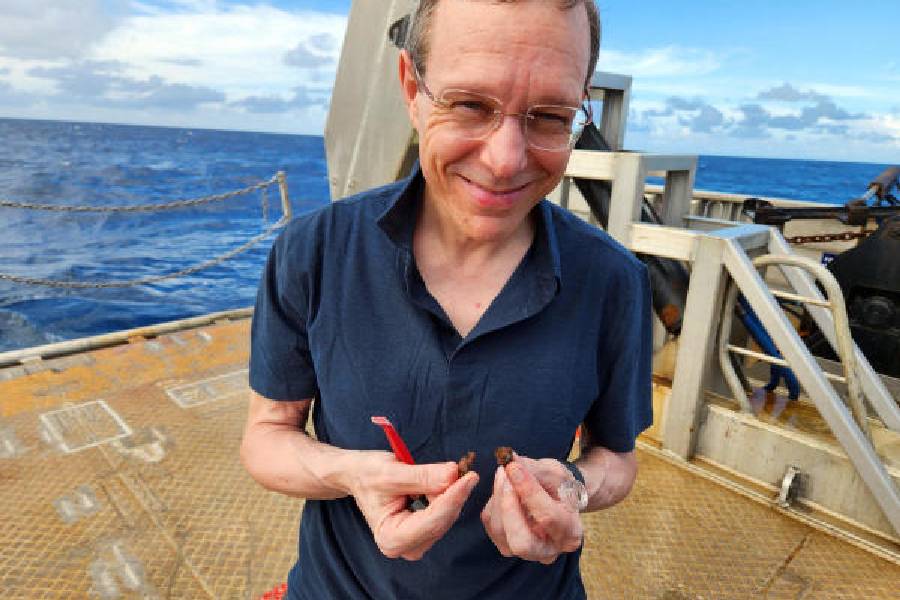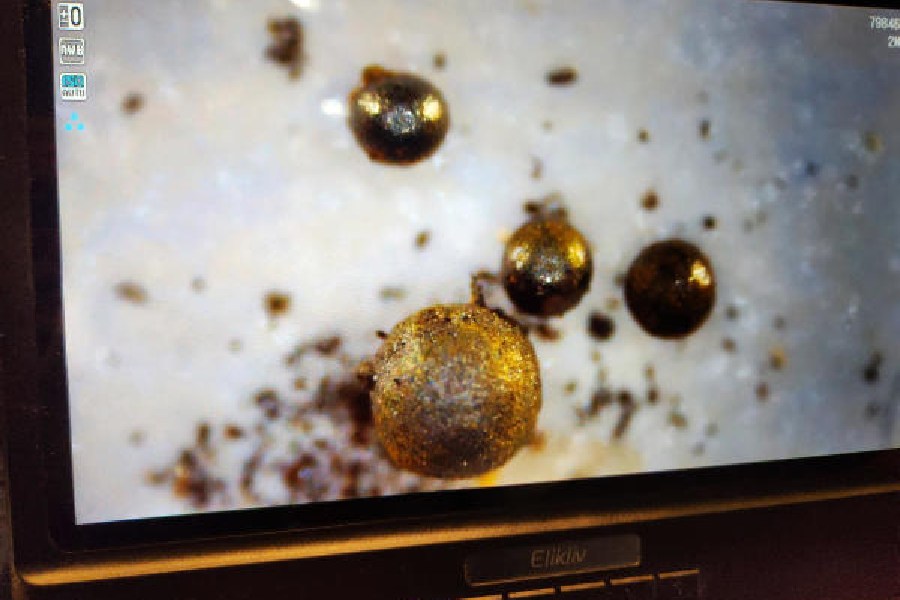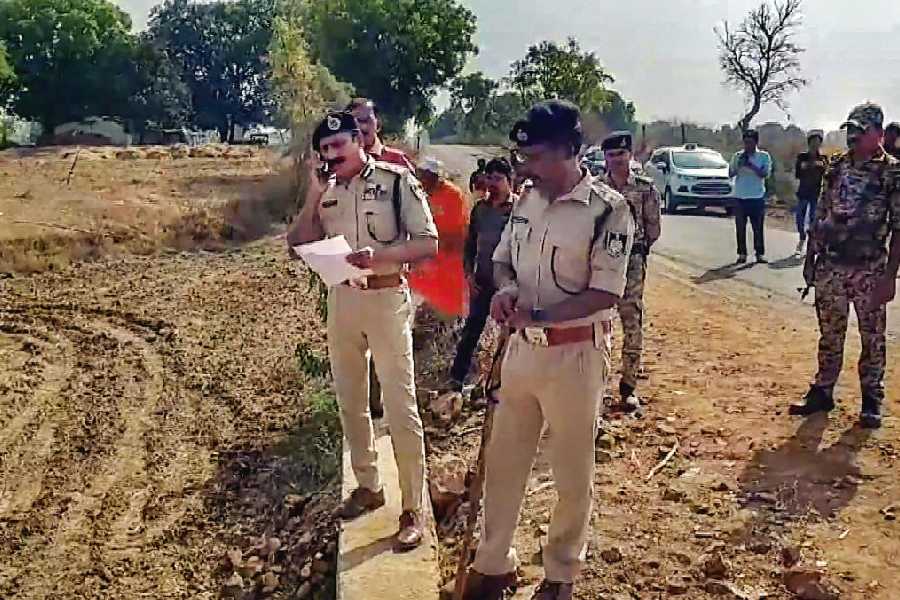On January 8, 2014, a fireball from space blazed through Earth’s atmosphere and crashed into the sea, north of Manus Island off the northeastern coast of Papua New Guinea. Its location, velocity and brightness were recorded by US government sensors and quietly tucked away in a database of similar events.
That data sat for five years, a source of no contention until Avi Loeb, a theoretical astrophysicist at Harvard University, and Amir Siraj, then an undergraduate student at the university, stumbled across it in 2019. Based on its logged speed and direction, Siraj identified the fireball as an extreme outlier.

Avi Loeb, a theoretical astrophysicist at Harvard University
Last month, Loeb led an expedition to retrieve fragments of the fireball off
the western Pacific seafloor. On June 21, he claimed that he had. And such discoveries, he says to the chagrin of many of his colleagues, may be the way scientists find evidence of extraterrestrial life.
“Not biological creatures, the way you see in science fiction movies,” Loeb said. “It’s most likely a technological gadget with artificial intelligence.”
Many astronomers, though, see the announcement as the latest example of Loeb making an outlandish declaration that is too strong and too hasty.
Steve Desch, an astrophysicist at Arizona State University, US, said several of his colleagues were now refusing to engage with Loeb’s work in peer review, the process by which scholars evaluate one another’s research to ensure that only high-quality studies are published.
For much of his career, Loeb has been a powerhouse of a cosmologist, churning out hundreds of papers on black holes, dark matter,
the first stars and the fate of our universe. But he has been captivated by the search for aliens since an interstellar object named Oumuamua zoomed by our planet in 2017. While scientists debated whether that visitor was an asteroid or a comet from another star system, Loeb made the case that it could be an artefact of intelligent life.
Loeb also began studying the fireball catalogue from the Center for Near Earth Object Studies at Nasa. That led to the object that had been detected in 2014. From its direction and speed at impact — 28 miles per second — Loeb and Siraj concluded that the fireball had been moving too fast for something gravitationally bound to our sun. That meant, like Oumuamua, it must also have been interstellar.
They wrote a paper about the discovery in 2019. It was initially rejected by The Astrophysical Journal, but the same journal then accepted it for publication in November, several months after US Space Command announced in a memo circulated on Twitter that measurements of the fireball’s velocity were accurate enough to infer interstellar origin.
That appeal to authority isn’t enough, said Peter Brown, a meteor physicist at Western University in Ontario, Canada. It’s unknown how precise the US Defense Department data is, which affects how likely it is that the object came from beyond.
Loeb’s recent ocean expedition to salvage remnants of the meteor in question was financed with $1.5 million from Charles Hoskinson, a cryptocurrency entrepreneur, and organised through EYOS Expeditions.
The voyage took place 60 nautical miles north of Manus Island along the expected path of the 2014 fireball. A group of scientists, engineers and sailors and a film crew, as well as Hoskinson, accompanied Loeb. He has documented the voyage and its aftermath in a 42-part (and counting) series of self-published blog posts.
For two weeks, the team dragged a custom-built sledge equipped with magnets, cameras and lights across the seafloor, retrieving it at regular intervals to search for metallic bits of the 2014 fireball stuck to its surface. In the end, they recovered scores of glimmering beads, each less than a millimetre in diameter. Preliminary analyses performed on the ship showed the spherules to be made mostly of iron, with lesser amounts of other metals.
That’s not commonly found in the waters around Manus Island, said Maurice Tivey, a marine geophysicist at Woods Hole Oceanographic Institution, US, who was not involved in the expedition but who once used underwater robots to map that region of the seafloor. Instead, sediments and volcanic ash are prolific — material that doesn’t move around much once it has settled on the ocean bottom.
That, combined with the roundness of the recovered fragments — suggesting they were once aerodynamic — seemed pretty conclusive to Tivey. “So I do think he’s found pieces of it,” he said.
Scepticism about the endeavour flared at a recent Asteroids, Comets, Meteors Conference that occurred while the deep sea expedition was underway. Loeb disagreed with that pushback. “When I was educated as a physicist, I was told when you have a model and it doesn’t agree with the data, it means you have to revise your model,” he said, referring to measurements in the Nasa catalogue.
He also believes, unlike many of his colleagues, that the US military sensors are trustworthy, even though he lacks access to their raw readings. That he and his team found what they think are fragments of the 2014 meteor at the location indicated by those measurements only makes him more confident.
It’s unlikely that the government will declassify how precise those devices’ data is. So Loeb is banking on a different kind of proof: he has sent the spherules to labs at Harvard University, the University of California, Berkeley, US, and the Bruker Corp. in Germany for rigorous analysis and dating. Spherules older than our solar system, or with a distinct isotopic signature, must be interstellar.
But even if the fireball really did come from another cosmic neighbourhood, far more evidence is needed to show that the spherules are linked to extraterrestrial life.










